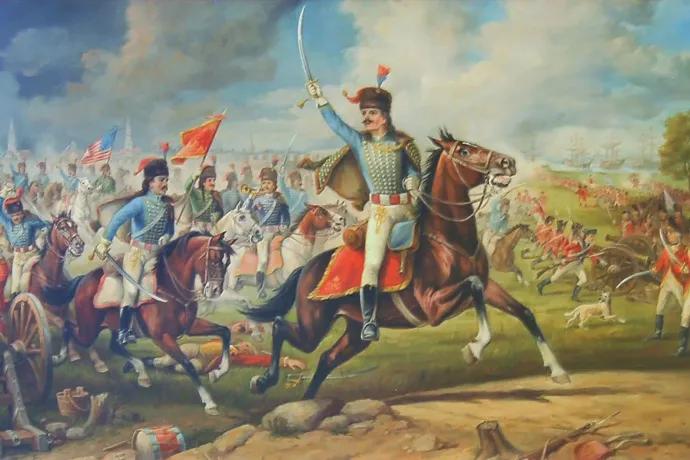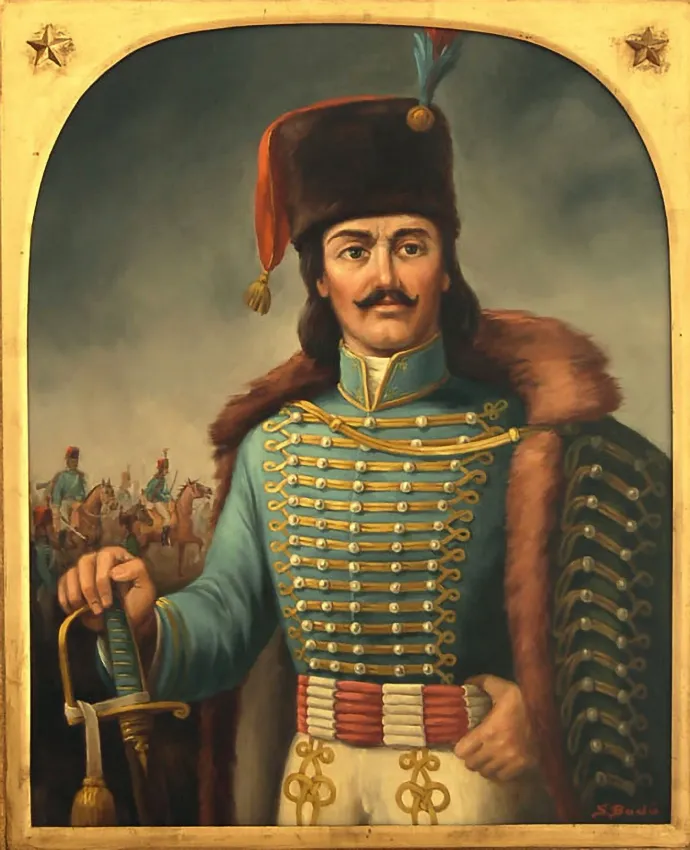
A Hungarian hearing the name Mihály Kováts probably wouldn’t think much of it — it’s a fairly common name, though more often spelt “Kovács”.
Yet that is the name of the hero celebrated in his place of birth, the eastern Hungarian town of Karcag. A statue of him has been erected and a school has been named after him, even though the great heroics he performed took place 5,000 miles away in the 18th century. This one-time officer in the hussars — light cavalry —was part of a duo who reformed the American cavalry during the revolt against the British, which led to the formation of the USA.
How did this Hungarian find his way to the American War of Independence? Born into a family of the lesser nobility in 1724, Mihály Kováts was an orphan by the age of eight. After completing hiseducation at the Calvinist school in Karcag, he broke the rules and joined the Hávor hussar regiment in Gyömrő at the age of 16 in 1740.
A Hungarian mercenary who also fought against Hungarians
He didn’t have to wait long to put his training into practice.That same year Maria Theresa ascended to the Habsburg throne and faced a nightmare as the Prussians and the French saw their chance to take advantage of her potentially weakened empire. This marked the beginning of the War of the Austrian Succession, which threw the 16-year-old Kováts straight into action.
He turned up in numerous armies across Europe after that, gaining quite a name for himself — which, it turned out, was to come in useful later. Kováts was effectively a mercenary in the major wars of the age. The standing armies that 18th-century rulers maintained tended to be small, so that in time of war they hired soldiers to boost their numbers. A recruiting officer was entrusted by the ruler to enlist soldiers from among the youth of any nation that supported their cause. As a result, Kováts even came face to facewith Hungarians on the battlefield, such as when he fought against the Bercsényi company in the Czech lands.
From recruiter to planner
There are few sources about Kováts’ life, and we know more about his life from the age of 52 after he joined the armies of European volunteers in 1775 in response to the outbreak of the War of Independence.
He wrote a letter to Benjamin Franklin offering his services. In the end he did not wait for an answer but traveled to the colonies and sought out George Washington. He handed over confidential letters to Washington, which suggests he might also have had a role as a messenger. However, he did not seem to have won Washington’s trust.

Initially he became a recruiting officer in a German volunteer corps in Philadelphia, but his fortune soon changed after he met Kazimierz Pułaski, a Polish brigadier general who had fought for Polish independence and later went to America. Their friendship proved a vital one in the war.
Although Pułaski is officially credited in American history with organizing the Continental Army’s cavalry, it is now recognised that Kováts also played an indisputable role.
It was he who worked out numerous plans that Pułaski put into effect. The Polish general recommended to Washington that they reform the cavalry along Prussian lines. However, unlike Kováts, he had never served in the Prussian army. Of the two of them it was the Hungarian who had direct experience of how the Prussians operated.
The experience of this duo saved the American army on several occasions, and in setting up the light cavalry they neutralized the superiority that the British army had previously enjoyed on the battlefield.
“I have the fortune to report to Your Excellency that the dragoons have performed a miracle,” the report went back to Washington on 3 March 1778 after the skirmish that took place near Haddonfield. In the second half of that year they were again successful in an action at Easton fighting the Native Americans who had been stirred up by the British.
In spring 1779 they threw themselves into battle with renewed vigor, and in May succeeded in preventing the British from taking the town of Charleston, in South Carolina.
According to sources, the cavalry covered 750 miles and were worn ragged by the time they reached the town, just as its defenders were discussing the terms of surrender. Pulaski marched into the room and declared that he would not hear of surrender, and that he would defend the town. Defend the town he did, although he did suffer losses, the greatest of whom was Mihály Kováts. His own side was not able to recover his body from the battlefield, but
it is revealing that the British, in recognition of Kováts’ past, buried him with military honors.
They did not live to see victory
Neither of the light cavalry heroes lived to witness the triumph of the 13 colonies and their declaration of independence. The Polish general fell in battle soon after, during the siege of Savannah on 15 SeptemberKováts’ widow nursed his memory for the rest of her life. In 1780 she had a chapel built for him in Szinye (present-day Svinia in Slovakia). However, both in Hungary and in America he gradually became forgotten. It was only in 1926 that his name attracted the attention of one Aladár Póka-Pinyi, who published his research in specialist military journals in America in 1934. This was picked up by Ödön Vásáry, a Calvinist minister living in America. Their joint research was finally published in 1982 under the title of A Hungarian Hero of the American War of Independence.
Kováts’ memory is cherished to this day by Hungarian Americans. They unveiled a plaque to him in Charleston, and 11 May was declared Mihály Kováts Day in Washington in 1955 to mark the day he fell in battle. In Hungary a school was named after him in Karcag in 1992, after the fall of the communist regime, and the Mihály Kováts Friendship Society and the school organize academic and sport competitions in the town every year on 11 May.
Translation by Charles Hebbert.
If you enjoyed this article, and would like to make sure you don't miss similar content in the future, subscribe to the Telex English newsletter!
The translation of this article was made possible by our cooperation with the Heinrich Böll Foundation.